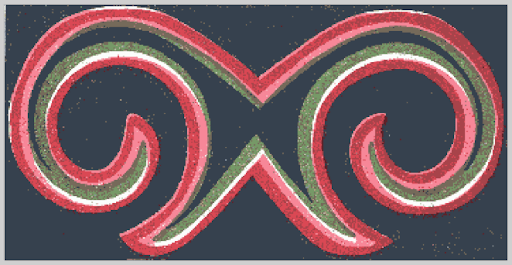The Evolution of Kazakh Ornamentation
Ornamentation, evolved over the centuries and influenced by the country’s history, is integral to Kazakhstan’s rich and unique cultural heritage. Art historian Raushan Yeschanova outlines its evolutionary path, significance to Kazakh life and society, and how it continues to develop and inspire contemporary art and culture. Origins of Kazakh Ornamentation Kazakh ornamentation emerged in ancient times, reflecting the peculiarities of nomadic life and the country’s natural environment. Simple geometric shapes and symbols were used in rituals and to decorate everyday objects, textiles, clothing, jewelry, dwellings and graves. The main components of Kazakh ornamentation were lines, curves, dots, circles, zigzags and geometric figures, arranged and intertwined to create rhythmic compositions and patterns. Abstracted from natural phenomena and zoomorphic, these early ornaments were valued both aesthetically and for their deep symbolic significance. Influence of Cultural Traditions Over time, due to exposure to other nations’ cultural traditions through trade and the passage of caravans through the country, Kazakh ornamentation became more complex and diverse. Many of its motifs share similarities with designs found in artefacts made by other Turkic-speaking peoples, including the Kyrgyz and Mongolian Alai Kazakhs. Interaction with Turkic, Mongolian, Persian and other cultures, enriched Kazakh ornaments making them more multi-layered and multifaceted. For example, the Mongolian influence is apparent in the introduction of more complex zoomorphic and plant motifs, whilst that of Persia is evident in the refinement and elegance of linear design. Among plant patterns, Raushan singles out the early "shytyrman"; a complex interweaving of geometric, horn-shaped and plant motifs. [caption id="attachment_19112" align="alignnone" width="4000"] Image Source: liveinternet.ru[/caption] Ornamentation in the Medieval Period One of the most important stages in the development of Kazakh ornamentation was the formation of the khanate and the development of urban centers during the medieval period. At this time, complex ornamental compositions including abstract patterns, plant motifs, animal images and heraldic symbols appeared in the khans’ palaces as well as religious buildings. Widespread in their application, these ornaments decorated architectural features, luxury items, jewelry, and textiles. Totemism and Symbolism in Kazakh Ornamentation Kazakh ornamentation is also closely related to the totemic beliefs of the ancient Turks. Totemic signs and symbols, often related to animals, had a deep sacred meaning. A symbol of prosperity and vitality, the ram’s horn is ubiquitous in ancient cultures from the Pacific Ocean to the Mediterranean Sea, and is widespread among both Iranian and Turkic tribes. Images of the ram and closely related animals, such as the argali and the Siberian goat, are the most common themes in ancient Eastern art. For millennia, horns have appeared in fluid, interlocking designs in Turkic artefacts, and, denoting prosperity and wellbeing in Kazakh ornamentation, are frequently seen above the doors of yurts and on ancestral graves. The bird is also a powerful symbol within Kazakh ornamentation. Representing freedom, "kus kanat" or "kus muryn" was commonly used in jewelry. Images of eagles were favored in the art of the Saks, whilst nationwide the popular abstracted image of ravens’ claws represents protection. [caption id="attachment_19113" align="alignnone" width="4000"] "Kus...



